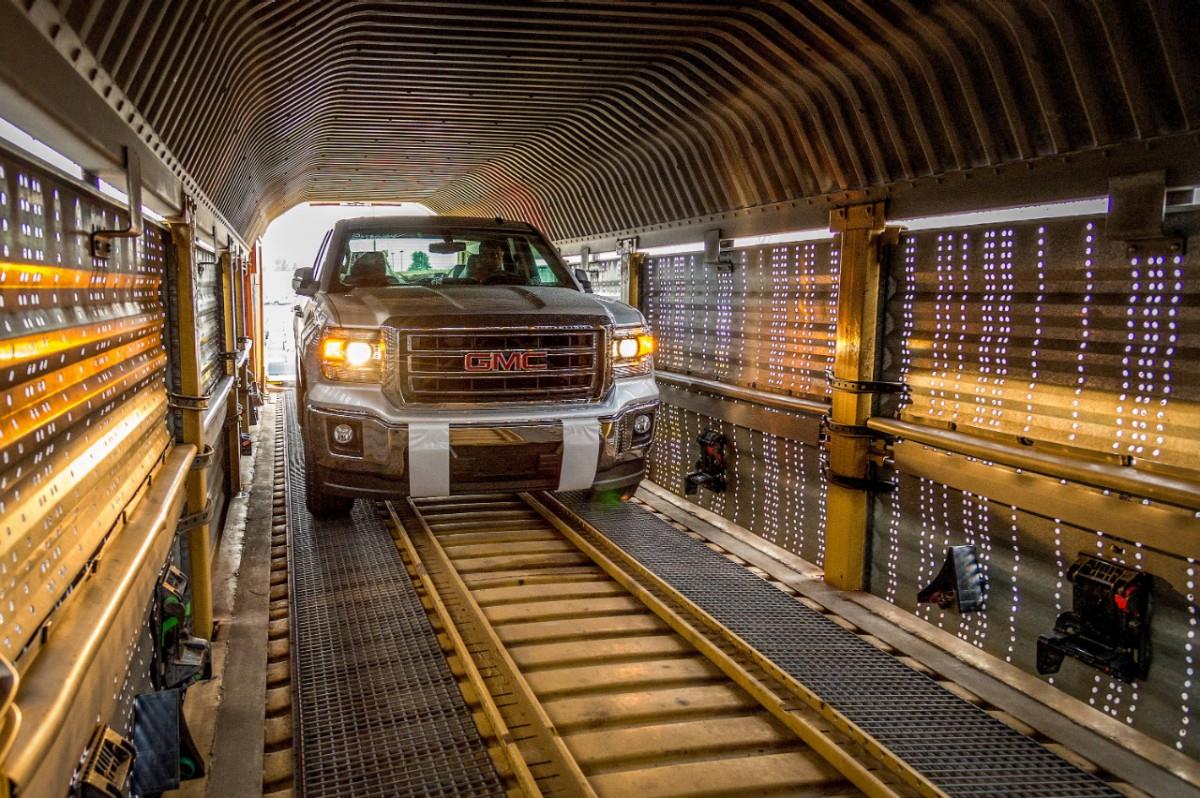7 Tips to Deal With Bad Weather If You are a Carrier

All carriers have to deal with bad weather conditions at some point in their career. Some are more affected by this situation than others. For example, haulers who must travel long distances with rigid vehicles or who move with a trailer are at greater risk of being affected by these conditions since they must travel long distances or have less flexible driving equipment.
However, no driver can avoid bad weather, even if he will only cover a short distance. Although crucial, many haulers find it challenging to drive in these weather conditions and often do not have the equipment or materials to deal with them, leading to significant problems.
After all, it is estimated that, in the United States alone,24% of all traffic accidents occur when there are adverse weather conditions. Knowing how to act when the weather is bad can not only help you protect the goods you are transporting; it can also save lives. That's why we want to share with you some of our best tips for haulers on how to anticipate and prepare your vehicle for bad weather conditions, especially during the winter months.
1.Plan your route well
To deal with bad weather, it is essential to prepare well in advance.
It is recommended that drivers check the weather forecast to anticipate possible incidents related to environmental conditions. If you have an application installed to inform you of the weather or listen to the news on the radio on the way, you can adapt and prepare if there is an unexpected weather change.
You can also look at a map where the service areas are on your journey before hitting the road to see where you can stop if the weather suddenly turns bad. Planning your route well in advance (for example, the night before, instead of tomorrow) can help you anticipate if you will be late on some routes and suffer less stress on the road, which could affect your concentration and the quality of your driving.
Therefore, preparing in advance can reduce the chances of an accident and help you ensure that the goods you transport arrive at their destination on time.
2.Avoid distractions
Drivers who are distracted behind the wheel are much more likely to have an accident in bad weather conditions. When they send messages with their mobile, they are 23 times more likely to have a collision. And these possibilities increase even more when there are bad weather conditions.
Listening to music or podcasts can undoubtedly be very useful for drivers who must stay up at night behind the wheel. Still, it's best not to play the music too loud or talk on the phone, and under no circumstances send text messages while driving. Even if the weather isn't bad (and especially if it is), you should focus your full attention on the road the entire way. One second of distraction can cause you to react too late.
3.Check that the vehicle is in good condition before starting off
Most carriers must inspect their vehicles before getting behind the wheel, but sometimes it is easy to forget to perform certain checks. The inspection should be visual and straightforward and cover all aspects of the vehicle. These are the elements that must be verified:
- Windshield wipers: check that the blades are not worn and that they can properly clean the windshield.
- Tires: the tread of the tires is essential, especially on slippery roads, so it is necessary to check that they are not too worn. It is also essential to look at the inflation pressure of the tires. If the pressure is higher or lower than recommended, it could lead to a loss of traction. On the other hand, do not also forget to check the spare wheel.
- Check the battery, antifreeze, and windshield washer fluid.
- Verify that the license plate number is visible and legible.
- Lights - Check that the vehicle's lights are clean and working correctly. Headlights, turn signals and emergency signals are essential when driving in bad weather conditions.
- Mirrors and windows - Make sure all mirrors are clean and windows are not fogged. Check that your mirrors are in the correct position, especially those that reflect your blind spots.
- When you're driving, pay particular attention to hazard warning signs, light signals, and vehicle gauges, especially the temperature gauge.
- Fuel: do not forget to refuel and have enough fuel for more kilometers of the route you plan to do. It is essential to make sure you fill the tank at least halfway before starting a course in winter.
4.Drive with more caution than usual
It seems clear that when we drive in adverse weather conditions, we must take special care behind the wheel. However, there are some aspects that we can change that not all drivers think about. To start with, you need to slow down. Traction drops significantly in lousy weather, so it's essential to slow down in especially dangerous areas.
It would help if you also were careful when breaking. Smooth braking and acceleration will reduce the chances of skidding and loss of wheel control when the road slips. Also, you must take special precautions when crossing or near a bridge. Ice on bridges is often more slippery than on other road areas, so you must be very careful. By last, slow down when making a turn. Ensure you change direction smoothly and in complete control of the vehicle to prevent the wheels from spinning.
5.Get yourself an emergency kit
When the weather conditions are adverse, you must have all the elements that you may need in these cases, such as:
- Clothing: enough clothing and blankets, protective clothing, or specific environmental conditions such as gloves, hats, snow boots, rainwear, reflective jackets, etc.
- A flashlight.
- Enough food and water: it is always convenient to bring something to snack on, such as fruit energy bars or muesli and nuts.
- Snow gear: a sand or salt bag, snow boots, flares, a shovel, snow chains, traction mats, or even carpet strips (to put under the tires if your vehicle gets stuck).
- Enough windshield washer fluid and wiper blades.
- Battery clamps.
- First Aid Kit.
- Navigator with GPS or a map to locate yourself in possible detours that you have not planned.
- A tow cable.
6.Increase the safety distance
Although stopping distance may seem unimportant, it is essential to avoid accidents in bad weather. When it rains, or visibility is reduced on the road, it is necessary to increase the safety distance to give you more braking and reaction time. Ice or wet leaves can cause skidding, especially in cold or humid conditions. If you leave a reasonable distance between your vehicle and the one in front of you, you will have much more leeway in these situations, and you will be able to prevent a small skid from turning into an accident.
7. If conditions are really bad, get off the road
When you have to deliver on time, it doesn't always seem possible to stop the vehicle. The saying "prevention is better than cure" makes sense in the world in these situations. Arriving on time is essential, but ensuring that neither you nor the merchandise you are transporting will suffer any damage is critical.
We recommend that you be cautious and do not trust that the snowplow truck has cleared the road before you are about to pass or that it will stop snowing at some point. Act according to your common sense and listen to the latest weather forecasts and warnings.
If visibility is very low and you hear on the news that the situation does not seem to improve quickly, it is best to stop at the nearest service station. It is likely that, in the long run, making this decision helps you save time. After all, if you or your truck is damaged, the delivery delays will be much longer.
Popular Posts
-

décembre 12, 2022
How Does RCC Auto Transport Works? -

décembre 15, 2022
What Happens When you need to… -

décembre 14, 2022
How To Ship A GMC Sierra -

décembre 13, 2022
How to Ship Small Equipment

